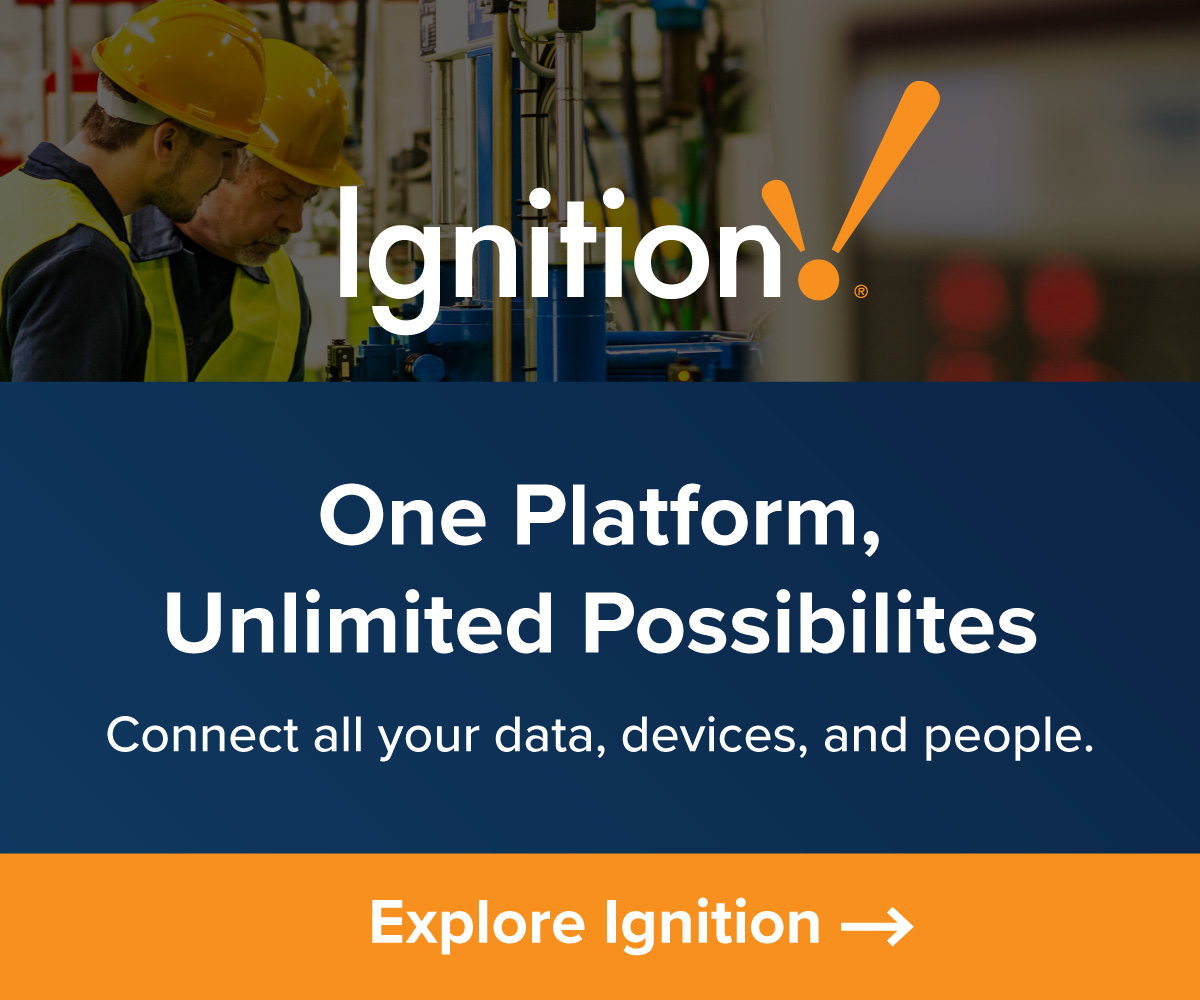by Gary Mintchell | Aug 22, 2025 | Software, Technology
I have written about alternative technologies several times over the past 20 years. I’ve speculated about the power of Raspberry Pi for various control projects. Open source and standards-based programming tools. Some projects have become public using alternatives to big-name tools.
Can a company switch to different technologies?
David Heinemeier Hansson, co-founder and Chief Technology Officer of 37 Signals, explained a major change at the company moving from Apple-technology-based software development to a Linux-based one.
37 Signals developed the popular collaborative work tool Basecamp. Also the email client I use, HEY. Heinemeier Hansson co-wrote with partner Jason Fried the books Remote: Office Not Required, It Doesn’t Have To Be Crazy At Work, and Rework.
When the company released HEY, Apple gave them a lot of App Store grief. 37 Signals had been an almost exclusive Apple shop. The fallout from the hassle Apple gave them caused Heinemeier Hansson disenchantment with Apple. He immediately switched from iPhone to Android. Found out he didn’t lose anything in the transition. Then he explored Linux on the desktop. He didn’t think that would ever work, but he found a way around.
I should mention that he is a major force behind the programming language and IDE Ruby on Rails. He began this journey with Ubundu and Omakub on a less complex computer than the Mac. He then worked on his own open source Linux distribution called Omarchy with Hybrland windowing built on the Arch Linux distribution.
This worked so well for his own development work that he is transitioning all the company’s software development work to that platform.
Can you develop with new technologies?
Yes, if you have the talent and will to change.
by Gary Mintchell | Jul 15, 2025 | Productivity, Technology
The marketing people at Hexagon tried to set up a meeting with Mike Payne, co-owner and president, Hill Manufacturing in Tulsa, OK, while we were at the Hexagon Live event in June in Las Vegas. We couldn’t connect then, but we finally caught up this week. I wanted the meeting because while talking to product people at the company brings in depth product information, people who actually use the products for daily success bring an entirely refreshing perspective.
Payne graduated from the University of Tulsa with a degree in management information solutions. He and a couple others founded a software company focused on shop floor data collection. The software collected data from automation and sensor devices providing the data to ERP. He eventually left the company pivoting into making investments. After a period of time, he decided he missed manufacturing purchasing Hill Manufacturing from the Hill family around 2017.
Hill Manufacturing is a production machine shop. The company had been in business for about 40 years pretty much making the same parts for the same customers in the same way.
Payne dived in studying Hill’s current processes. He began to bring technology into the processes leveraging it for productivity improvements. Now, he says, it’s more of a tech company that makes parts than a standard machine shop.
The key driver is driving productivity. Like everyone these days, he experienced the pain of finding new employees. Plus, leveraging technology to improve processes enables his current employees to produce more parts. It’s a tough business. Whittling out a little more profit for each part keeps the company healthy.
Staying active on the investment side, Hill had acquired several other machine shops. The company has grown from 22 spindles to 63. With each acquisition, he’s discovered many improvements to productivity and profitability comes with upgrading technology on the machines he’s acquired. Upgrading older machines with new technology provides a new lease on life that he calls a Second Round of Life.
He mentioned AI in the front office. Since I was working on a podcast and essay on AI, I was all ears. Hill uses AI in a couple processes. Using Toolpath application, they take the 3D model from the drawing and use AI with their CNC programming software to do the actual programming. It’s theoretically capable of providing 100% of a program. They’ve discovered that it’s really about 80% good. But that makes his programmers 80% more efficient.
AI is also pretty good at reading G code from the CNC program. They can translate the code to English and enter into their shop floor management software. Workflows, tool setups, and other work instructions are provided to operators to make them more efficient and effective.
They use laser measurement devices from Hexagon (remember Hexagon?) close to the machine for immediate quality feedback. They also use Datanomix, a Hexagon partner, to improve productivity.
Payne searches constantly for new technology to improve processes. He mentioned how new coatings on a drill, for example, improves productivity. Tooling and workholding advances also contribute.
Using technology to improve processes and productivity is the foundation of Hill Manufacturing’s success. He can’t solve problems by adding more bodies, so he fills in with technology. Hill now does 2x revenue with 2/3 of the people. With today’s demographics, Payne provides a great example of intelligent use of technology to solve business problems.
by Gary Mintchell | Jun 25, 2025 | Robots, Sensors, Software, Technology
This is part two of my reports from the Hexagon Live Global Event. I had been to one previous event for only a day. Hexagon is such a large company comprised of many parts that I had a bit of struggle understanding it all.
The core Hexagon involves measurement, metrology. They have precision measurement tools for the small, medium, and very large targets. Tools for building applications complement these instruments.
Hexagon also comprises much software, having acquired Intergraph years ago and others since. Company focus has become easier with the announced spinoff of much of the software business into a new company called Octave.
Octave
Mattias Stenberg, who is leading Octave, explained the new company’s focus taking the musical analogy of an octave—taking it to the next level. The core of the new company consists of these four businesses from Hexagon:
- Asset Lifecycle Intelligence—Intelligence that drives decision-making efficiency and lifecycle value creation
- SIG—Safety, Infrastructure, and Geospatial—Act on information to save lives, improve infrastructure and enhance services
- ETQ—ETQ Reliance—ETQ Reliance is a cloud-native quality management system solution (QMS), powered by an agile platform that drives 40+ best-in-class applications adaptable to your unique environment. ETQ is the leading provider of quality, EHS and compliance management SaaS software, trusted by the world’s strongest brands.
- Bricsys—Hexagon AB, a global leader in digital solutions, today announced the acquisition of Bricsys, a fast-growing developer of CAD (computer-aided design) software that has been at the forefront of providing open, collaborative construction technology solutions since its founding in 2002. Its CAD platform, BricsCAD, supports 2D/3D general, mechanical, and sheet metal design and building information modelling (BIM) in one system.
I don’t know if this was supposed to be another musical reference, but as a guitarist, I’ll take it as such. Octave is Intelligence at Scale. They see themselves not just as a builder of software, but as helping customers evolve, adapt, predict, prevent by providing pre-trained agents. The platforms will be embedded, context aware, mission critical systems, validated.
This comment struck me. I concluded my first report with the thought that software becomes more powerful, yet it’s still trying to solve the problems I had in 1977. With power comes complexity. Stenberg noted a survey they conducted with C-level executives see more software, more complexity, more dashboards…and yet, less actual visibility. Systems that don’t talk to each other creating silos.
My concluding thought on my last essay was that we must not have a technical problem—we must have a people problem.
Only 20% of execs told them they are getting something from digital transformation. OK, I can’t resist thinking of an irony—yet they order their employees to use AI, or else???
They envision a process where customers build digital first, where the digital twin is a reality (he calls it “mirrorworld”). These will enable the movement from reactive to predictive (another future vision I’ve written about for 20 years or more).
A final vision—Create self-aware, resilient infrastructure.
Robotics
Moving on to another product line—robotics. I shot a short video of Hexagon’s newest robot—Aeon. This “humanoid”, or human-form-factor, robot exhibits quite advanced ability to do the work of human assemblers. When I asked why they developed the robot to look and act like a robot, they told me that existing work stations are designed for humans. Therefore, this is an easy replacement for non-existent human workers on the assembly line.
Digital Twins
Returning to digital twins. I spoke with Jeremy Treverrow about uses of digital twins. Initially, customers could use Hexagon’s precision measurement technology to create a digital twin of a component part. Perhaps this is a service and repair part no longer in production with perhaps no good design information existing.
Using the Hexagon Design X software set, the imported digital twin can be exported in an igis file, used for simulation, and can even design a manufacturing process around it.
A lot of power.
by Gary Mintchell | May 14, 2025 | Manufacturing IT, Sensors, Technology
Most of the interesting developments for the past several years have been in software. But not in the MES area that I began my software career working with. The companions to software have been security and artificial intelligence (AI). The AI component assumes many forms. In today’s news, we have AI assisting visual inspection (in a way a quite old application updated with new developments) integrating with MES. The companies involved are Cybord and Siemens.
Cybord, a leading provider of advanced visual-AI electronic component analytics, and Siemens Digital Industries Software have signed a new OEM agreement to integrate Cybord’s cutting-edge AI technology with Siemens’ Opcenter software for Manufacturing Execution Systems (MES). The collaboration expands a previous OEM agreement and enables Siemens to offer Cybord’s powerful AI solutions to Opcenter customers and Siemens’ factories globally.
The integration of Cybord’s visual AI platform with Siemens’ Opcenter empowers manufacturers to enhance quality control of their Surface Mount Technology (SMT) processes. The solution will provide real-time detection of defective components, help build component repositories, and integrate visually verified traceability across the supply chain. Customers will be able to streamline their operations without the need for additional dashboards as the solution is fully integrated into Opcenter MES. This integration also allows customers to take immediate action on product integrity issues, improving their ability to address problems on the fly and helping to ensure consistent product quality.
by Gary Mintchell | May 6, 2025 | Technology
Coordinate Measuring Machines (CMM) do not reside in my my specific level of expertise. I love new applications of technology, though. Hexagon engineers have brought CMMs into the digital age with many benefits for manufacturers. These words fail to adequately express the power of the advancement. I’d recommend visiting the website to watch demos. Pretty cool.
News in brief:
- Faster inspection with no trade-offs – designed and engineered from the ground up to deliver precision while closing productivity gaps and eliminating bottlenecks
- Enables intuitive operation for all skill levels through simplified workflows and cloud-powered software
- Built for connected facilities with an end-to-end digital architecture, seamless automation integration, and scalable upgrade paths
Transforming quality inspection with high-speed, connected measurement workflows, Hexagon’s Manufacturing Intelligence division announced May 6, 2025 the launch of MAESTRO, an all-new, next-generation coordinate measuring machine (CMM) engineered from the ground up to meet the rising productivity demands of modern manufacturing. Designed to combat global skills shortages and increasing quality requirements, MAESTRO sets a new standard for speed, simplicity, and digital integration in metrology.
Expanding on Hexagon’s heritage of metrology excellence, MAESTRO is built upon four principles: to be fast, easy to use, connected and scalable. Its digital-first architecture offers the industry rapid measurement routines, an intuitive user experience and seamless data integration. With modular software and hardware, it is designed to scale with evolving production needs, making it ideal for aerospace, automotive, and high-precision manufacturing environments where there is a high demand for accuracy to deliver safety, compliance, and performance.
MAESTRO features a newly-developed digital architecture, incorporating digital sensors, a single cable system, and a completely new controller with brand new firmware. Together, these new capabilities increase throughput, streamline the complete measurement operation, and ensure future-ready connectivity for modern production environments.
Customers will benefit from:
- Unmatched precision at speed: MAESTRO’s redesigned mechanical structure, single-cable digital platform, and advanced sensors enable fast measurement with sub-micron tolerances that satisfy stringent industry standards. Customers gain the confidence of repeatable, certified measurements for critical quality control. This provides reliable results, even for complex shapes and the most demanding applications.
- Breakthrough speed: MAESTRO delivers industry-leading throughput through high-speed motion while maintaining exceptional precision. Synchronised axis movements, rapid calibration, and cloud-connected software significantly accelerate set-up, programming, execution, and reporting.
- Simpler use and programming: MAESTRO remasters quality inspection by simplifying CMM programming and streamlining workflows. An intuitive user interface, combined with next-generation cloud-native metrology apps powered by Hexagon’s Nexus platform, enable both expert metrologists and less-specialised staff to generate repeatable, standard-compliant measurements effortlessly – without the need for coding.
- End-to-end connectivity: Designed as an Industrial Internet of Things (IIoT) native measuring device, MAESTRO integrates into Hexagon’s Nexus ecosystem, sharing real-time data across design, production, and quality teams, driving data-driven decision-making and improving overall equipment effectiveness (OEE). Near-line or in-line integration with automation systems is seamless.
- Scalable platform: With a modular design and a robust roadmap for future upgrades, MAESTRO is built for scalability. Manufacturers can easily update software, sensors, and additional capabilities over time, ensuring that their investment remains future-proof and continuously supports evolving production needs.
MAESTRO will be offered initially in multiple sizes and configurations, each engineered for automated multi-sensor workflows utilising tactile probes and laser scanning probes from a new “digital rack” that tracks occupancy status, sensor supply health and status that can be accessed on-device and throughout the desktop and cloud-native apps. Additional future-ready models and enhancements will follow, all based on a single, coherent platform.
MAESTRO will be available for order from 30 June 2025.
by Gary Mintchell | Apr 25, 2025 | Technology
I use speech-to-text often in the mornings when I think of something during my morning walks. However, text-to-speech isn’t useful for me—but it could have many enterprise use cases. I first heard of Deepgram in January this year. This news makes one-per-month since. They’ve been busy. I haven’t used it, but it sounds useful.
From the company’s press release—Aura-2 Beats ElevenLabs, Cartesia, and OpenAI in Preference Testing for Conversational Enterprise Use Cases, Delivering Natural, Context-Aware Speech Synthesis with Unmatched Clarity, Speed, and Cost-Efficiency for Real-Time Enterprise Interactions
Deepgram, the leading voice AI platform for enterprise use cases, today announced Aura‑2, its next-generation text-to-speech (TTS) model purpose-built for real-time voice applications in mission-critical business environments. Engineered for clarity, consistency, and low-latency performance, and deployable via cloud or on-premises APIs, Aura‑2 enables developers to build scalable, human-like voice experiences for automated interactions across the enterprise, including customer support, virtual agents, and AI-powered assistants.
Aura-2 is built on Deepgram Enterprise Runtime—the same infrastructure that powers the company’s industry-leading speech-to-text (STT) and speech-to-speech (STS) capabilities—providing enterprises with the control, adaptability, and performance required to deploy and scale production-grade voice AI. With Aura-2, Deepgram extends its leadership in enterprise speech technology to TTS, enabling businesses to deliver natural, responsive, and contextually accurate conversations at scale. Today, more than 200,000 developers and 1,200 companies, including Fortune 500 enterprises and voice AI startups like Jack in the Box, Vapi, and OneReach.ai, build on Deepgram.
Enterprise applications require more than natural-sounding voices—they demand domain-specific pronunciation, a professional tone, consistent contextual handling, and the ability to perform reliably, cost-effectively, and securely—often in environments that require full deployment control.
Aura-2 delivers high-quality, context-aware speech designed for the scale, precision, and resilience that business-critical environments demand. Unlike entertainment-focused systems optimized for creative expression, Aura-2 reflects the priorities of enterprise voice AI, delivering benefits across key dimensions:
- Domain-Specific Pronunciation Excellence – Aura-2 ensures precise handling of industry terminology, accurately pronouncing healthcare terms, financial jargon, product names, and complex numerals without special tagging. This built-in accuracy eliminates the need for extensive pronunciation dictionaries or manual intervention, ensuring clear communication in specialized fields where precision matters most.
- Professional Voice Quality & Naturalness – With 40+ distinct voices spanning U.S. English and localized accents, Aura-2 delivers authentic, business-appropriate speech that avoids the overly theatrical tones common in entertainment-focused TTS. Organizations can select consistent voice personas—from “empathetic and charismatic” to “calm and professional”—that align with their brand identity across all customer touchpoints. Support for additional languages is already in development to further expand global reach.
- Context-Aware Delivery – Aura-2 intelligently adjusts pacing, pauses, tone, and expression based on context—whether delivering a phone number, handling a support escalation, or navigating a transactional interaction. The result is smooth, coherent speech with uniform volume and crisp articulation throughout.
Explore the blog for an in-depth breakdown of Aura-2’s capabilities: https://deepgram.com/learn/introducing-aura-2-enterprise-text-to-speech
Watch a fun demo of Deepgram’s voice agent API
Try Deepgram’s interactive demo
Get $200 in free credits and try Deepgram for yourself




